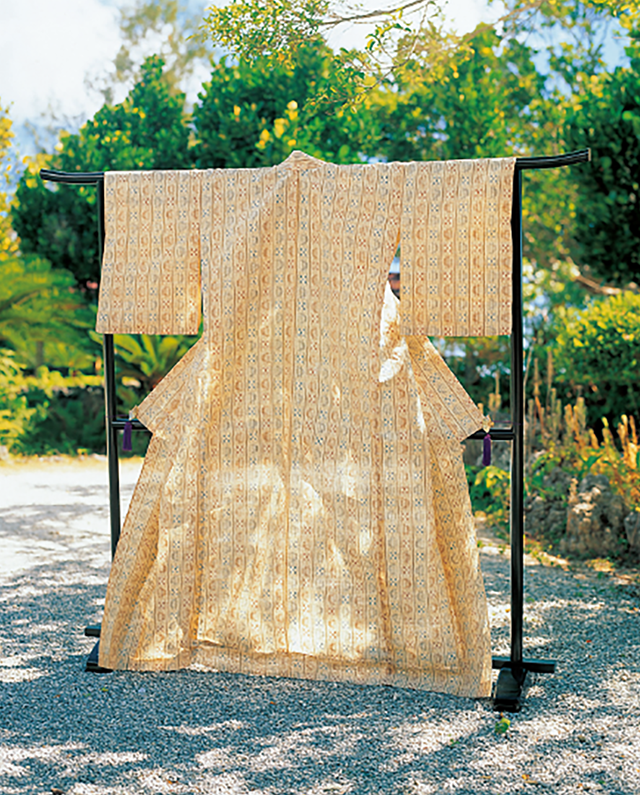八重山上布
Pronunciation: Yaeyama-jofu
産地・Production area: Ishigaki and the Yaeyama Islands, Okinawa Prefecture
Yaeyama-jofu is a handwoven ramie cloth using hand-twisted ramie yarns and (uniquely in Okinawa) a brush-printing resist (surikomi-nassen) to place kasuri patterns before weaving. The signature white ground with calm brown or indigo ikat motifs is light, cool, and ideal for summer kimono. Dyestuffs are sourced from local flora. Ramie weaving in Yaeyama is centuries old and appears in the Annals of the Joseon Dynasty; in the Edo period it was levied as tribute to Satsuma and circulated on the mainland as “Satsuma jōfu” (which in fact included Yaeyama-jofu and Miyako-jofu). After the 1903 abolition of the head tax, the craft industrialized; improved looms and integrated “Ayatsuburu” devices enhanced precision. Though wartime brought interruption, the craft was restored and is actively preserved today.
See also: Kimono-en Instagram — Introduction to Yaeyama-jofu
The Long History of Yaeyama-jofu
Once demanded as tribute cloth by the Ryukyu Kingdom, Yaeyama-jofu continues to be woven today as a refined traditional textile. The exact origin of Yaeyama-jofu remains unclear, but in 1673, during the Ryukyu royal era, the islands of Yaeyama were officially required to provide it as goyofu (tribute cloth). These tributes included white jofu, red-striped jofu, as well as middle- and lower-grade jofu, and the system continued until 1903 under the harsh poll tax system.
Despite this history, Yaeyama-jofu has been preserved as a highly refined traditional craft. Its distinctive reddish-brown beni-uro dye and indigo kasuri patterns remain cherished today, appealing to wearers across generations.

Photo courtesy of株式会社あざみ屋



















